0″ height=”324″ />
Tag Archives: publication
Manuscript:Probiotics: Prevention of Severe Pneumonia and Endotracheal Colonization Trial—PROSPECT: protocol for a feasibility randomized pilot trial
0″ height=”324″ />
Review: Immunosenescence: implications for vaccination programs in the elderly
0″ height=”324″ />
Manuscript: The evolution of the scavenger receptor cysteine-rich domain of the class A scavenger receptors
Do you work out? Cause you’re built like a rock! A rock like Dwayne “The Rock” Johnson! You have an impenetrable body thanks to your complex immune system. So how did you get such a sophisticated immune system?
In the Bowdish lab, we do more than just macrophage biology; we also study the evolution of the immune system! The scavenger receptors are a group of receptors that play an important role in your immune system by binding harmful bacteria. Our most recent publication by Yap et al., looks at how these receptors evolved and how evolution has changed their function. These receptors are found in various forms of life such as sharks, frogs, and mammals, but the function and appearance of these receptors has changed over time. Check out the open access….
Extra! Extra! Bowdish Gang Uncovers Truth About IL-17 In The Nose!
The nose is the gateway to the soul… or the lungs at least… making it an important point of first contact between our fragile bodies and the hordes of superbugs attempting to take over the world. Only the brave immunologist has the power to save us from this dire threat. While it’s been known for a few years now that the inflammatory cytokine IL-17A is key to the control of many respiratory infections, no-one has been able to provide any information on the source of this cytokine in nasal infections or how this production is regulated. No more!
Post-doctoral fellow Chris Verschoor and Ph.D. Candidate Mike Dorrington, both trainees in Dr. Dawn Bowdish’s lab have recently had their manuscript “MicroRNA-155 is required for the clearance of Streptococcus pneumoniae from the nasopharynx” accepted for publication in Infection & Immunity. The paper, which was produced in collaboration with Dr. Param Nair of the Firestone Institute, outlines how microRNA- (miR-)155 regulates the immune response to S. pneumoniae colonization in the nasal passages of mice by stimulating the differentiation of Th17 cells. These cells then produce large amounts of IL-17A, which then acts as a chemotactic agent for macrophages, which have awesome swords and stuff that kill the bacteria and save the world! (macrophages are the best cells, by the way)
This paper is the first to show a direct connection between IL-17A-producing T cells and the clearance of a bacterial pathogen from the nasopharynx. It is also the first to show a phenotype of IL-17A deficiency without completely knocking out the cytokine itself. It represents a significant step forward in understanding the regulation of intranasal immune responses to bacterial colonization and how innate and adaptive immune networks collaborate in clearing these events. Way to go Bowdish Lab!
For more information please visit www.bowdish.ca/lab and check out the paper in an upcoming edition of Infection & Immunity.
Verschoor CP, Dorrington MG, Novakowski KE, Kaiser J, Radford K, Nair P, Anipindi V, Kaushic C, Surette MG, Bowdish DME. MicroRNA-155 Is Required for Clearance of Streptococcus pneumoniae from the Nasopharynx. Infect Immun. 2014 Nov;82(11):4824-33. doi: 10.1128/IAI.02251-14.
Verschoor CP, Dorrington MG, Novakowski KE, Kaiser J, Radford K, Nair P, Anipindi V, Kaushic C, Surette MG, Bowdish DME. MicroRNA-155 Is Required for Clearance of Streptococcus pneumoniae from the Nasopharynx. Infect Immun. 2014 Nov;82(11):4824-33. doi: 10.1128/IAI.02251-14.
This paper outlines how microRNA- (miR-)155 regulates the immune response to S. pneumoniae colonization in the nasal passages of mice by stimulating the differentiation of Th17 cells.
Kaiser JC, Verschoor CP, Surette MG, Bowdish DME. Host cytokine responses distinguish invasive from airway isolates of the Streptococcus milleri/anginosis group. BMC Infect Dis. 2014 Sep 11;14:498. doi: 10.1186/1471-2334-14-498.
Kaiser JC, Verschoor CP, Surette MG, Bowdish DME. Host cytokine responses distinguish invasive from airway isolates of the Streptococcus milleri/anginosis group. BMC Infect Dis. 2014 Sep 11;14:498. doi: 10.1186/1471-2334-14-498.
This paper demonstrates that there are host- and strain- specific responses to isolates of the Streptococcus milleri/anginosis group and that isolates from invasive disease appear to be more immunostimulatory than those from commensal relationships.
November is Lung Month! The Bowdish lab gets involved with the Breathing As One campaign.
Research in Lung health is not nearly as well funded as it should be considering the toll it takes on patients and our healthcare system. That’s why the Bowdish lab is involved in the Lung Association’s Breathing as One campaign to raise money for lung research. Click on the picture to read the insert that was delivered in a number of newspapers (including our own Hamilton Spectator) to launch the campaign.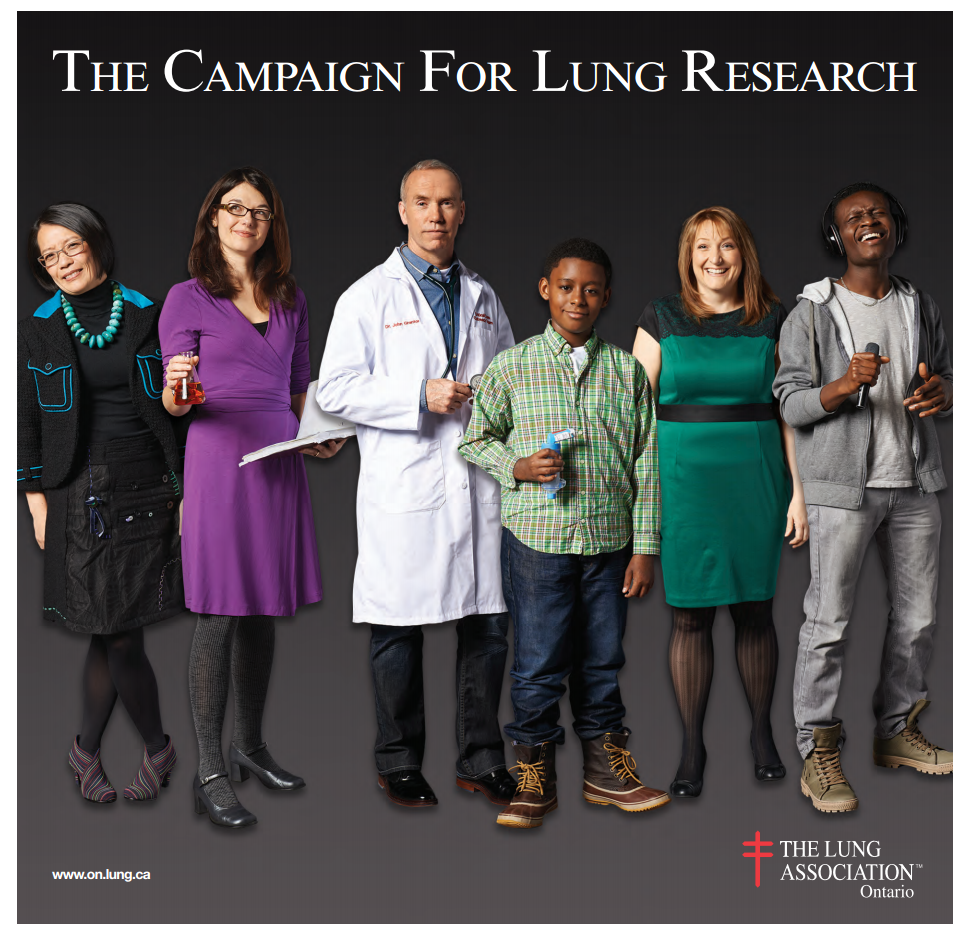
The Bowdish lab is on a roll!
This past month has been very productive in the Bowdish laboratory, with many triumphs achieved by it’s industrious members.
Firstly, a big congratulation goes to Kyle Novakowski, the Bowdish 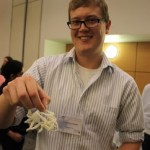 lab’s newest PhD student. Following a lot of hard work, determination and great dedication to his Masters project, Kyle successfully passed his transfer exam on July 7 and has officially begun his
lab’s newest PhD student. Following a lot of hard work, determination and great dedication to his Masters project, Kyle successfully passed his transfer exam on July 7 and has officially begun his seemingly endless exciting pursuit for a PhD. Good luck to Kyle in continuing his interesting investigation on the regulation and function of MARCO!
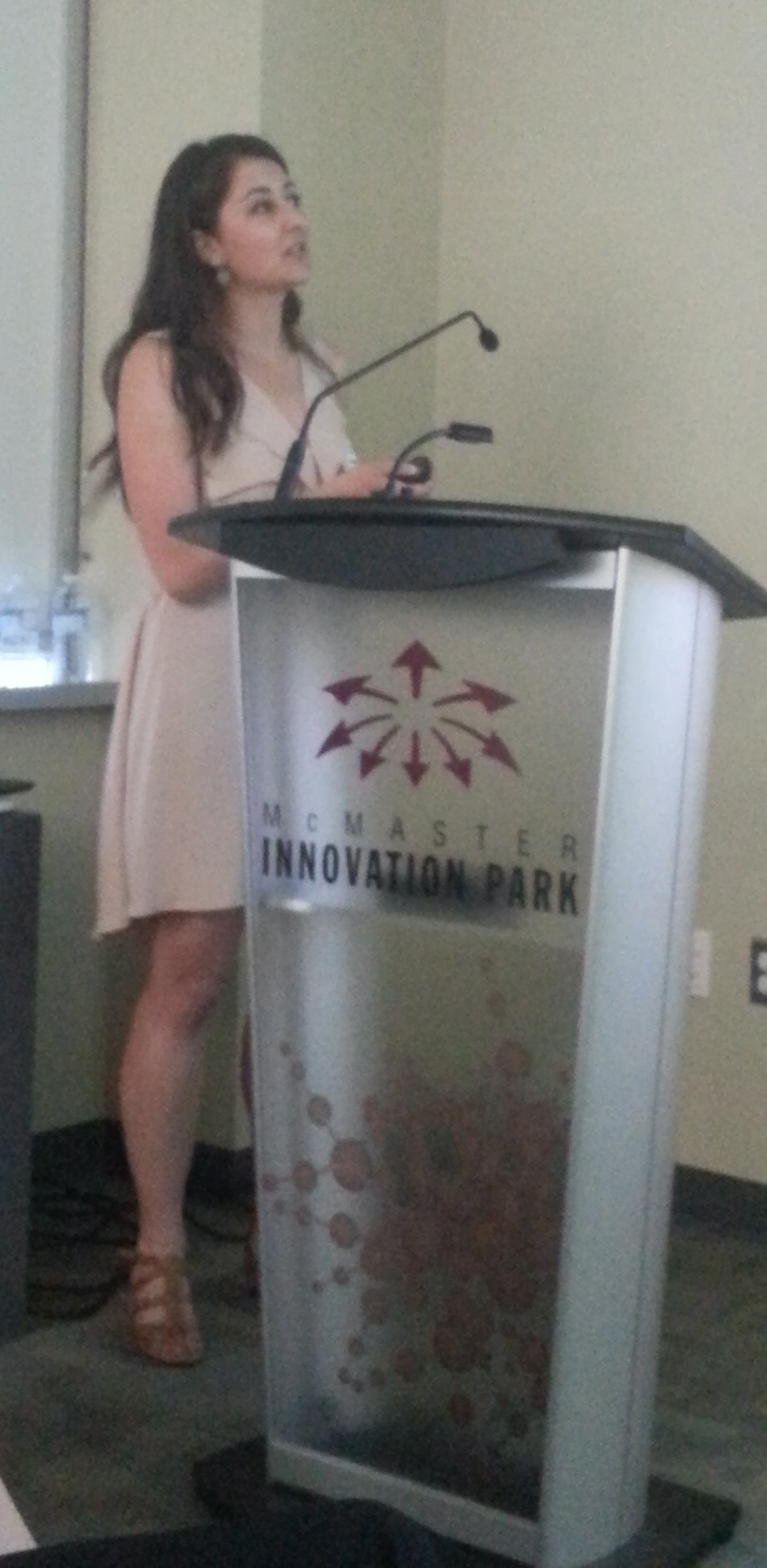
Dessi Loukov presents her undergraduate work in the Bowdish lab at the 1st annual Perey Symposium, convinces everyone she’s a senior PhD student and brings home the Faculty choice award for best speed poster presentation.
Next up is Dessi Loukov, who is currently an undergraduate but come September will be the Bowdish lab’s 4th PhD student. At the 1st annual MIRC Perey Symposium held on June 19, Dessi impressed faculty and trainees with her educational and enthusiastic speed poster presentation on modulating the immune system to potentially reverse age-associated inflammation. Dessi was awarded a travel award as a result of her superb presentation skills. Kudos also to Fan Fei (PhD candidate) and Avee Naidoo (MSc candidate) who gave excellent speed poster talks and Dr. Chris Verschoor who gave an excellent oral presentation. Who knew that research in inflammation could be so exciting? The Bowdish lab, that’s who!
One PhD candidate who deserves great recognition for his recent successes is Mike Dorrington. Not only was Mike awarded with a prestigious and well-deserved Canadian Lung Association & Canadian Thoracic Studentship, but he additionally achieved received The Ruth and Wilson Tafts Prize for Immunology for having the best paper published in a peer-reviewed journal in 2013. Geez Mike, save some awards for the rest of us. These awards will be used to further fund his fascinating work on the role of macrophages – clearly, the best cell around – in recognition and clearance of Streptococcus pneumoniae in the upper respiratory tract. Congratulations Mike!
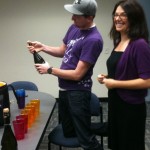
At the celebration of Mike’s first first author publication. Although Dawn is mostly happy for Mike, she is also slightly nervous that she might be about to lose an eye when the champagne is opened.
Then, there’s Dr. Chris Verschoor, the lab’s most productive and well-rounded member. Chris’ paper entitled, “Alterations to the frequency and function of peripheral blood monocytes and associations with chronic disease in the advanced-age, frail elderly“, was recently accepted into the PLoS one. If you’re interested in changes in monocyte populations with age – I mean, who isn’t? – keep a look out for Chris’ article in the next issue of PLoS one . Way to go Chris on this well-deserved publication!
<- Manuscipt accepted = happy post-doc.
And last, but definitely not least, the lab takes great pleasure in congratulating our passionate leader, Dr. Dawn Bowdish, who has been awarded tenure and a promotion to Associate Professor effective as of July 1, 2014. This accomplishment is a fitting acknowledgement of Dawn’s exceptional work, devotion and academic contributions to research in the field of macrophage biology. In addition to her promotion and tenure, Dawn recently received a Best Teacher Award in the Department of Pathology for excellence in undergraduate teaching and graduate supervision. Well-done Dawn!
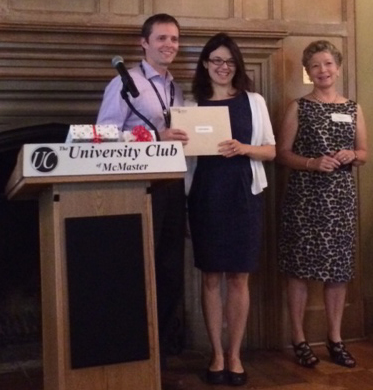
Dawn receives the Pathology & Molecular Medicine Department’s best teacher award for her undergraduate and graduate supervision. Dr. Murray Potter, the education co-ordinator and Dr. Fiona Smaill, the chair, present her with the award.
Congratulations Bowdish lab on our successes!
Way to kill it, like young macrophages on pneumo 😉
Whelan et al. The Loss of Topography in the Microbial Communities of the Upper Respiratory Tract in the Elderly. Ann Am Thorac Soc. 2014 Mar 6.
Whelan FJ, Verschoor CP, Stearns JC, Rossi L, Luinstra K, Loeb M, Smieja M, Johnstone J, Surette MG, Bowdish DM. The Loss of Topography in the Microbial Communities of the Upper Respiratory Tract in the Elderly. Ann Am Thorac Soc. 2014 Mar 6.
This paper describes how the microbial communities of the anterior nares and nasopharynx change between adults and the elderly.


